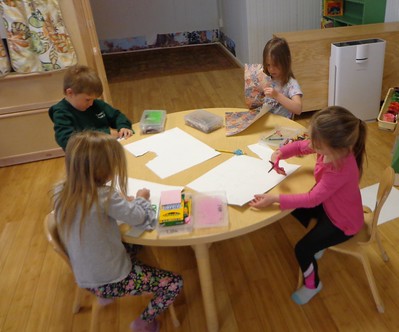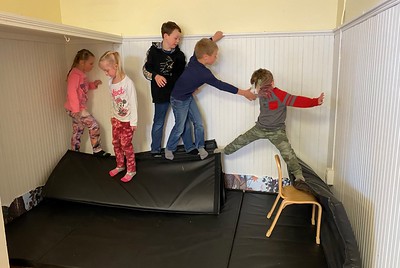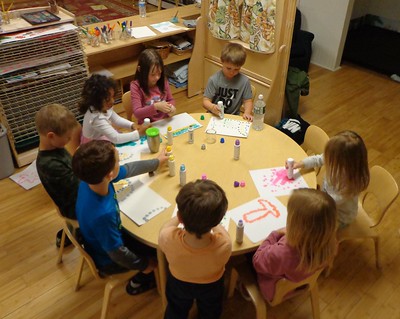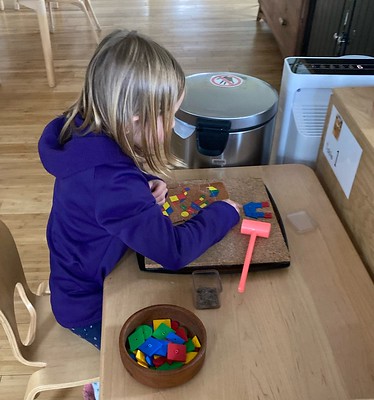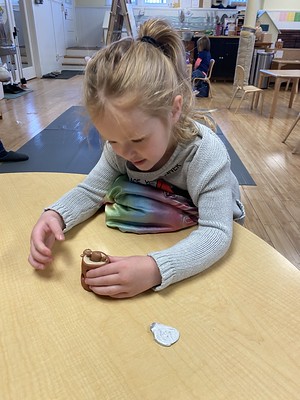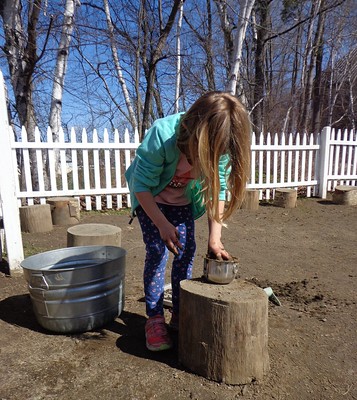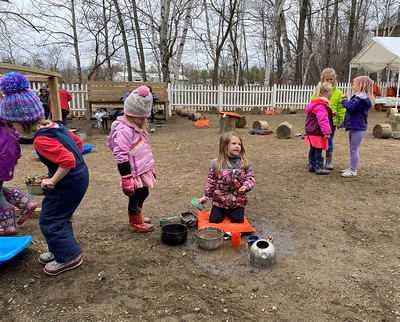We watched a video of Eric Carle reading his story The Very Hungry Caterpillar, then watched the story of Eric Carle’s The Very Busy Spider. We read Eric Carle’s From Head to Toe, and observed the pictures and noticed how they were made from paper that had been painted then cut and glued to create the pictures. The children each chose an animal or item that they wanted to create using cut paper collage like Eric Carle, then chose painted papers to fit their animal or item of choice. The artists created a flower, two unicorns, a princess, a train, a gorilla family, a monkey, and a butterfly.
We talked about helping. We played “The Wind Blows” and used statements such as “for everyone who likes to help at home,” “for everyone who likes to help dig in the dirt,” “for everyone who needs help zipping a jacket,” “for everyone who needs help sometimes,” “for everyone who likes to shovel the snow,” etc. We then read a social story about how to ask for help, how to appreciate help, how to accept or reject help, and how to respond when told “Yes, please” or “No, thank you. I would like to do it myself.”
We took out the parachute and played some parachute games. We helped Henrietta dance until she danced herself right off the parachute! We took off all our slippers, then listened for our name to be called then ran under, found our slippers, put them back on, then returned to our spots. Our final game was crocodile, where the crocodile goes under the parachute and tugs on someone’s foot to “eat” them and that child then becomes the crocodile.
During sign language with Rose the children took turns signing parts of The Very Hungry Caterpillar. Rose would face the child, who faced the students. She would sign and read, and the child would sign for the audience. They really enjoyed watching and signing!
Susan continued high and low from last week with the bells to the introduction of the C scale this week. First she showed us a xylophone. The children shared observations about the xylophone. They observed that it goes from short to long, it was arranged in rainbow colors with two blues, one at each end, and there were letters on the keys. Susan then asked students to arrange the boom whackers by length, and they made observations about those and how they were the same or different from the xylophone. Finally Susan introduced the glockenspiel, playing the beautiful tones in the C scale. The children identified which instrument was the highest C scale and which was the lowest, then they all took turns whacking the boom whackers on items around the classroom.
The children found that they could do pull ups from the shelf in the dramatic play area, so they jumped or climbed up or got assistance and hung or did pullups and tricks. They asked for the mats, then used them to do more tricks.
The weather went from beachy to winter, so we enjoyed adding another wall to the house, searching for worms, playing in the mud kitchen, creating a giant mud soup, playing with the snow, splashing in puddles, collecting water, and using our imaginations!
Kindergarten students read Eating Fractions and did some fraction work. They finished up the P-T section of their letter books, with the introduction of R, S, and T. They built R out of river rocks and walked R and r on the river rock stepping stones.
Friday morning the early students went on a worm hunt. With the cold snowy days no worms were easily located under stumps, so Michelle helped them dig up the soil in the garden until they had a good collection of worms. We read The Worm by Elise Gravel and An Earthworm’s Life by John Himmelman. We watched a couple short videos of a worm moving and learned how it is a fluid filled tube surrounded by muscles that it contracts and expands to move as it eats tunnels through the soil. The children then each collected a paper towel, water dropper, black paper, and a worm then did some observing and testing. They tested to see whether the worms preferred it wet or dry. They tested to see if they preferred light or dark. They observed the worms moving and noticed that they migrated to wet and dark.



